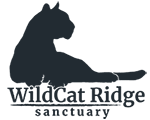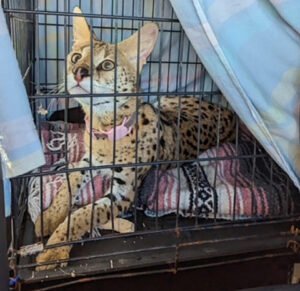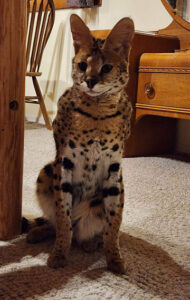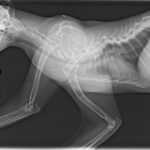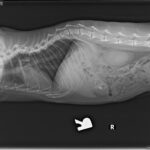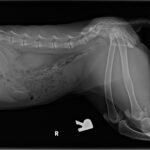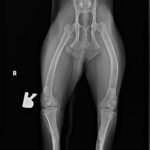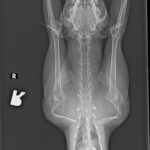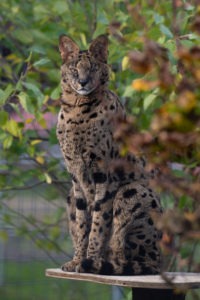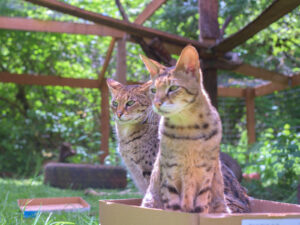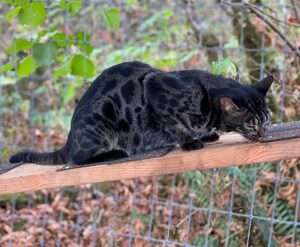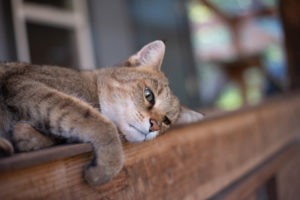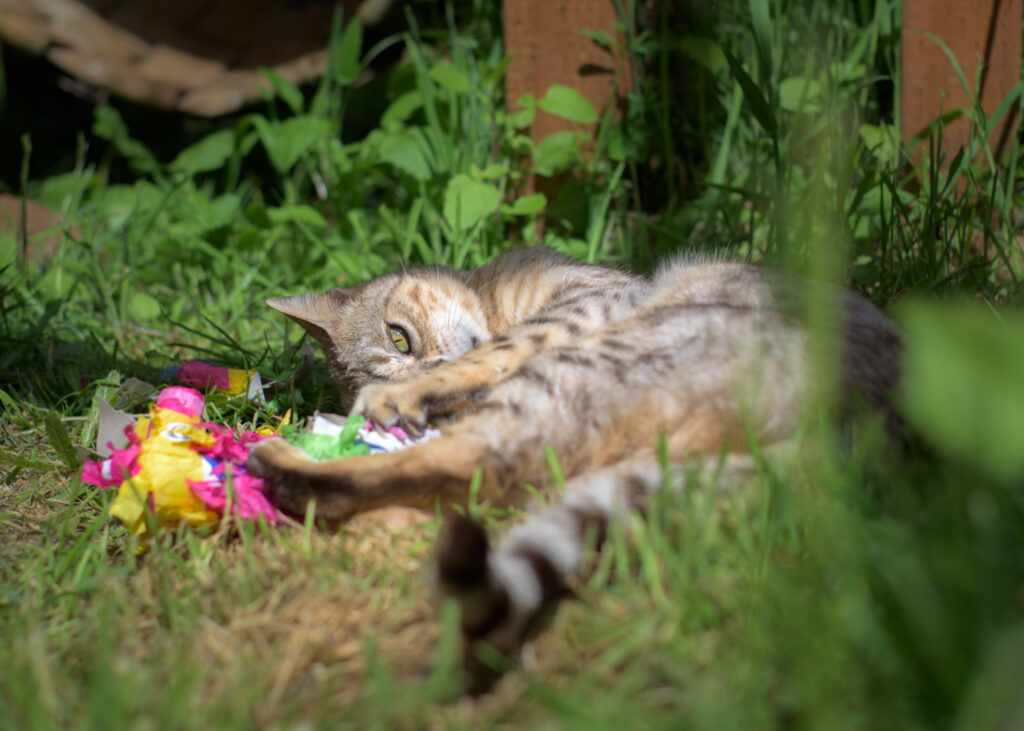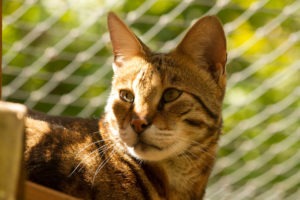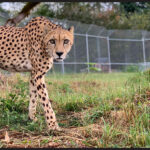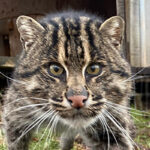Nala
The heartbreaking story of a 'pet' serval
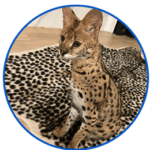 In early February of 2023, the owner of a serval in Canada passed away. A friend of the owner contacted us to see if we could give the cat a home. We said yes and excitedly prepared for her arrival while all the import paperwork was being done. We learned that this little serval was even an
In early February of 2023, the owner of a serval in Canada passed away. A friend of the owner contacted us to see if we could give the cat a home. We said yes and excitedly prepared for her arrival while all the import paperwork was being done. We learned that this little serval was even an
Instagram star with her own account and followers! The videos were supposed to show what a great “pet” she was. When we watched the videos, we saw something very different – and very heartbreaking.
We’re sharing Nala’s story so we can show everyone the hard truth about keeping servals – or any wildcats – as “pets.” We are adamant that all breeding and selling of wildcats as “pets” must stop now.
The following is the email we received from the woman caring for Nala in Canada in preparation for her coming to WCR. This is what she said:
"Dear Cheryl,
Good morning
Nala went for her vet appointment this morning and while her general health is good, she is the poster child for Metabolic Bone Disease. Her weight is 8.5kg, so smaller than we all thought and she has a very small ulcer on her left eye but other than that, generally, she's okay. My vet has some students, so for educational purposes and because the physical exam raised a lot of questions, he did some x-rays at no cost to me. To say I'm angry is an understatement and I feel sick to my stomach at what this cat has endured since the day she was born. As you can see in the x-rays, this poor cat has suffered hugely. Her scapulae have folded, there is a kink/break of some kind in her spine, I think one leg doesn't have a bend in it, and her pelvis, while it doesn't appear to have been broken the femur heads have obviously had to compensate or the pelvis compensate for the mess the bones have become. I'm not a vet, nor do I have any expertise in reviewing x-rays but it is so obvious anyone can see it. I'll try and get some video of her moving so you can see how bad she is.
I had a discussion with my vet about quality of life and I think that's something that needs to be seriously considered. - While she's been with us, she has been active, she has 'run' after a ball, plays in the water, and will crawl/half jump onto a chair or window ledge but she definitely cannot act like a normal Serval, nor will she ever be able to. - She eats well, poops and pees, and seems to be doing well and appears happy. But, we all know how well animals can mask pain, and given Nala has lived like this her entire life, whatever she's feeling is normal for her. I want to give her a chance but I also don't want her to suffer. She's only two years old and that could potentially be a long life of living on pain meds.
Cheryl, I know you are ready to take her on but I'm asking you to consider if moving her to the sanctuary is the right decision for Nala. You and Dr. Connolly know better than I do if this is something we should be doing. Just to note - we gave her 300mg of Gabapentin and it barely made any difference in her behaviour - she was just as spicy and mobile. I do know that animals in pain react differently to meds so I'm wondering if that may have happened in this case.
I'm sorry the news isn't better and I just want to make the right decision for Nala, she deserves it after everything she's been through."
Carla
When I sent the radiographs to Dr. Connolly for her opinion, this was her response:
‘Hi, Cheryl,
That poor cat!
She’ll never be comfortable unless she’s heavily medicated. She has severe metabolic bone disease. We don’t know how her organs are, but she may not be able to handle the stress of a move. All of her long bones are weak and bowed. Her scapulae are folded. Her spine has at least two major defects.
I cannot tell how healthy her jawbones are from these views. I am concerned about her heart, based on obvious nutritional disease. I am sorry, but my recommendation is humane euthanasia.’
Dr. Cheri Connolly
All of this information came to us the same day that Rajah, another serval in our care, passed away due to health issues stemming from his previous care.
It was overwhelming to deal with another tragic story of a serval we were trying to save and can’t. - When is this going to end? What we see on Instagram does not convey what is truly happening to these animals. They are NOT pets and more often than not, they’re being sold to people who have NO idea how to care for them but LOVE to post images of how cool they are with their wildcat. Seeing the videos of Nala on her page, you could clearly see how damaged she was. But not her owner. She just saw a wildcat she could pose with and get more “likes” and followers.
Nala was euthanized in Canada. We knew it was the only humane option left to her, but it broke our
hearts to know that she never had a chance to live a happy, pain-free life.
It’s frustrating, tragic and we are simply sick of it. It’s too late for Nala and for Rajah, but how many more small cats will we and our fellow sanctuaries try to save before this ends? The Big Cat Public Safety Act has been passed; - it’s time to come together and stop the breeding and selling of ALL wildcats.
